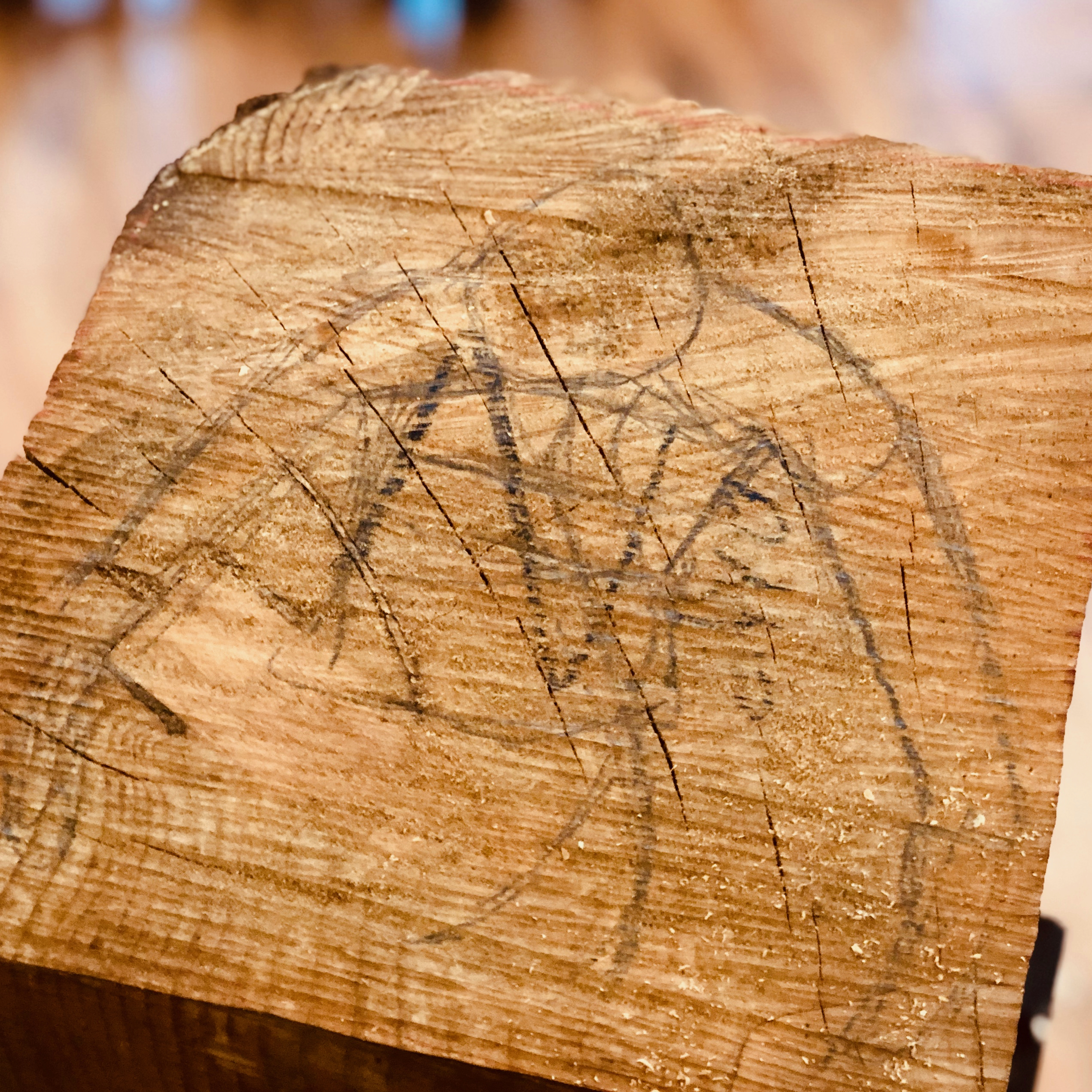Sculpting live
How does my chainsaw find its way from the trunk to the figure? I produce lots of sawdust and waste wood.
It starts with ideas – this text tells you where they come from. These four figurines answered my question: How do people find their balance when the ground is sloping? Here you go, step by step:
 Finding trees. Maybe slice them.
Finding trees. Maybe slice them.
Before the first sculptural cutting, there is the organizing of wood. For this purpose, I contact loggers and forestry companies. When the stock behind the studio slowly empties, the search for oaks, cedars, larches, lime or mammoth trees begins. All with different availability and suitability for my purposes – this video shows a delivery. The trunks are either directly turned into sculptures or cut into steles with a stronger chainsaw. Four cedar steles in the correct size were waiting for this balancing act.
 See within or outside.
See within or outside.
I created the first three figures in this series directly from inner images. The fourth had to be standing on crossed legs, looking at the smartphone and carrying a bag over its shoulder. I wanted to see that posture in front of me before I put it into action. So I made four selfies with props from each side. The smartphone turned into a very patient model. Only for more massive sculptures, I sometimes cut out a smaller wooden model, like for Donald with his teddy bear.
 Position in the wood.
Position in the wood.
I mark the position with grease pencils: where should head and shoulders be, in what size?
Are the hands stretched out? Is an object at head level or above? How close do I go to which edge of the stele?
Once the top item is cut, nothing can be shifted anymore.
Let’s go.
For filigree work, the smaller electric saws come into play. I work my way forward from top to bottom, walking around the object, alternating between vision and close-up work. The video shows how the sword of the chainsaw wants to be led, pushed, held back. And in between, I keep changing the battery, refilling oil, sharpening or replacing the chain.
 Blow away sawdust, wipe the floor.
Blow away sawdust, wipe the floor.
A compressor is always near me. High-pressure air exposes places where I have to work out the details. Sawdust and residual wood are wiped up when the workplace slowly becomes a stumbling hazard.
I am always looking new, touching up.
The figures stand in the studio for a while. When I walk past them anew, I notice details. Then maybe a shoe is shortened here, an arm is brought out more precisely there.
 Painting. Secure the stele.
Painting. Secure the stele.
Now colour comes into play. I mix pigments with natural-based solvents. The studio goes silent; I enjoy the way to the desired shade of colour and the meditative encounter with the newly created shape. Finally, depending on the sculpture’s structure, a base plate is to be mounted.
Show. Keep going.
Then it’s time to photograph, publish, exhibit, perhaps deliver. And I tackle the next idea.
Feel like joining me at work? Maybe at the next Open Studio Event? Add yourself to my mailing list.


